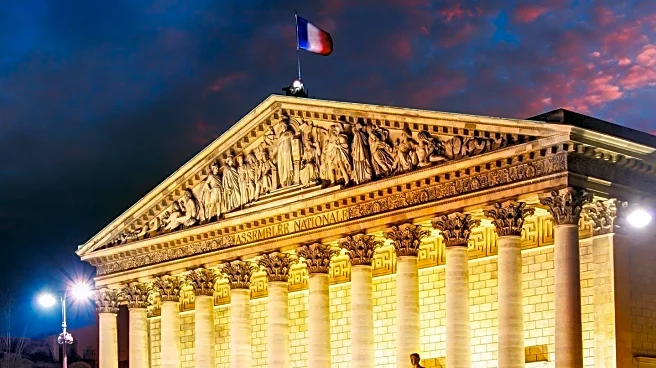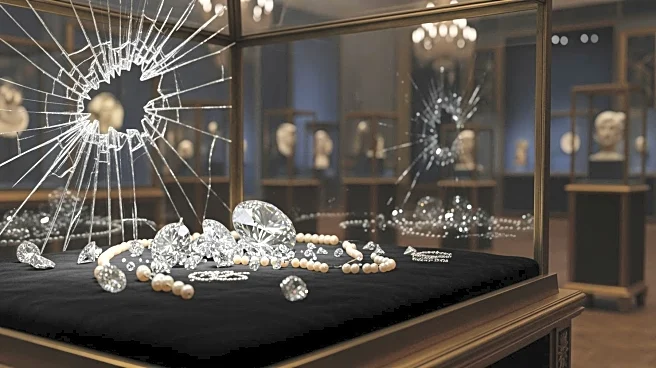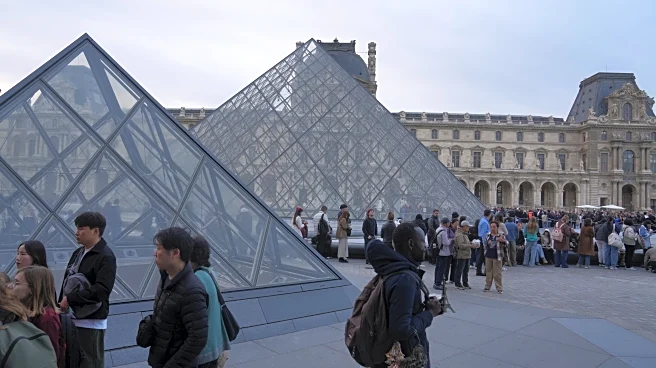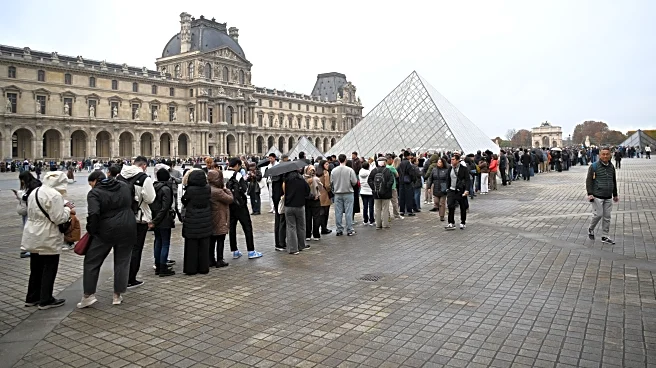What's Happening?
Authorities are conducting an urgent search for a group of thieves who executed a brazen jewelry heist at the Louvre. The incident occurred shortly after the museum opened on Sunday, with the gang managing
to complete the theft in just a few minutes. The Louvre, renowned for its vast collection of art and historical artifacts, was targeted by the thieves who managed to evade security measures and make off with valuable items. The swift nature of the heist has raised concerns about the security protocols in place at one of the world's most famous museums.
Why It's Important?
The theft at the Louvre highlights significant security vulnerabilities at major cultural institutions, which could have broader implications for museums worldwide. The incident underscores the need for enhanced security measures to protect valuable artifacts and artworks. The theft could lead to increased scrutiny and potential changes in security protocols at museums, impacting how they safeguard their collections. Additionally, the stolen items, if not recovered, could be sold on the black market, affecting the cultural heritage and historical value associated with them.
What's Next?
Authorities are expected to intensify their search efforts, possibly involving international law enforcement agencies given the high-profile nature of the crime. The Louvre may review and upgrade its security systems to prevent future incidents. The museum community might also collaborate to share best practices and improve security measures collectively. Public awareness campaigns could be launched to help recover the stolen items and prevent similar occurrences.
Beyond the Headlines
The heist raises ethical questions about the protection of cultural heritage and the responsibilities of institutions in safeguarding historical artifacts. It also highlights the challenges faced by museums in balancing public access with security needs. Long-term, this incident could lead to a reevaluation of how museums operate and secure their collections, potentially influencing cultural policies and funding priorities.












